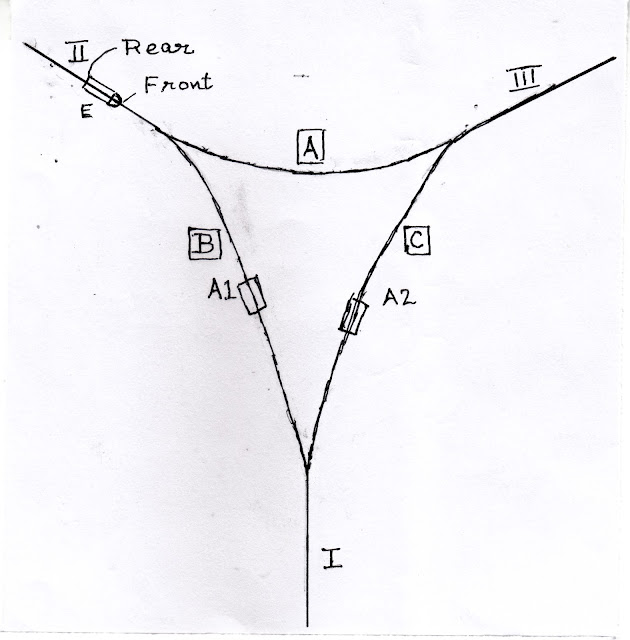One puzzle Begat Three
A few posts earlier I had said reasonably confidently that solving puzzles have the potential to rejig one’s brain cells. The process of reconfiguring the puzzle involves minimal brain work, but it is the process of solving the new avatar (after having solved the original) that appears to be important. In this post, as mentioned in the heading, I tried solving the shunting yard puzzle when I was perhaps in the sixth class. I was successful, as even then, at least six decades ago, I remember that the solution just snapped into place in my mind.
Then, recently, within the past two years or so, I tried to solve the same puzzle (as I remembered) and it took me more than the time it took me earlier to solve. My brain is not just as plastic.
The following sketch shows the puzzle.
The straight segments I, II, and III are long enough to accommodate the two carriages A1and A2 as well as the engine ‘E’. The goods carriages are symmetrical about the axes parallel and perpendicular to the tracks.
The puzzle asks you to transpose the goods carriages A1 and A2 (get A1 to where A2 is and vice versa). Lose shunting is not allowed. The further task is to get the engine to its starting position. This is quite trivial, if ...
...if you are allowed to park the engine in the direction opposite to how it was initially parked. That is, instead of the engine facing right and down as at the start, after effecting the transposition, it would face left and up.
I tried very hard to get the engine to face right and down after the transposition exercise; and I failed, miserably.
Then, I extended the puzzle further. What if the engine starts of in the straight zone I? This is shown in the sketch below.
I did learn one thing: each of the two configurations (one having the engine on the straight arm II, and the other with it on the straight arm I) has its own rotational symmetry, or mirror symmetry. I might be wrong on these speculations, like no symmetry of any kind anywhere!
What do I know?
Yes, I did know one thing: it takes very little to get more puzzles out of the one given.
Raghuram Ekambaram


No comments:
Post a Comment